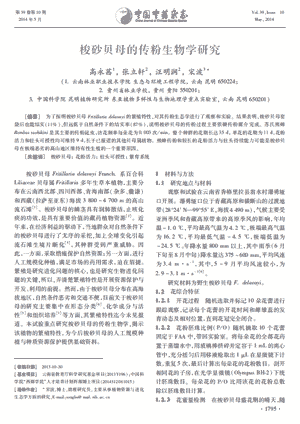NEWS 2014
Pollination biology of Fritillaria delavayi
GAO Yong-qian¹, ZHANG Li-xuan², WANG Ming-run², SONG Bo³
China Journal of Chinese Materia Medica 39(10): 1795-1798 (2014)
doi: 10.4268/cjcmm20141009
¹Department of Ecological and Environmental Engineering; Yunnan Forestry Technological College, Kunming 650224, China
²Guizhou Forestry School, Guiyang 550201, China
³Key Laboratory of Plant Diversity and Biogeography of East Asian; Kunming Institute of Botany; Chinese Academy of Sciences, Kunming 650201, China
Abstract
In this study, the processes of pollination ecology of Fritillaria delavayi were investigated to document its reproductive characteristics. Some individuals of F. delavayi could produce seeds under bagging without emasculation(11%),but the rate was significantly lower than that of the natural control(87%). It is suggesting that pollination of F. delavayi largely depends on pollen vectors. Bombus sushikini was the only effective pollinator of F. delavayi and the visitation frequency was 0.003 time-flower- 1·min- 1.Flowering of F.delavayi in whole population lasted for 35 d and single flower for 11 d.Pollen viability and stigma receptivity lasted for9 d and were relatively long compared with other Fritillaria genus plants. Consequently, bumblebee pollination and long floral longevity seem to be important for reproductive assurance of F. delavayi in harsh alpine environments.

